Happy Taco Tuesday!
Happy Taco Tuesday! Today we’ve got a quick and easy taco dinner board recipe and wine pairing for you to share with your friends and family.
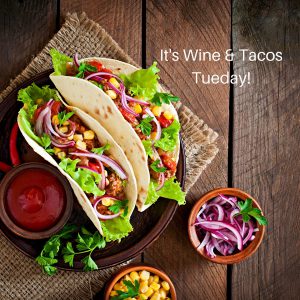
What you’ll need:
-
Soft/Crunchy tortilla’s (we love Old El Paso’s Stand N Stuff tortillas for easy building and serving!)
-
Onions
-
Meat of choice
-
Taco seasoning
-
Cheese
-
Lettuce
-
Tomatoes
-
Salsa
-
Sour cream
-
Guacamole
-
Cilantro
-
Limes
-
Jalapeño peppers
-
Tortilla chips
Serving board, preferably one that is round with raised sides. This one is beautiful, durable and budget friendly!
How you’ll do it:
Start with your serving board – lay down some parchment paper and place a bowl with shredded lettuce and tomatoes in the center.
Place smaller bowls around the center bowl and fill them with salsa, guac, jalapeño’s and sour cream. Make sure to leave room for your tortilla shells around the outside.
Take your taco meat of choice and cook with a medium onion and add your favorite seasoning. Fill the taco shells with meat and cheese and bake for 5 minutes.
Place your tacos around the outside of the board around the bowls placed in the center.
Place tortilla chips to fill in any empty spaces (and have an extra bowl to the side with more chips, because who only has a few?)
Last but certainly not least – serving some wine with your taco board. This will depend on the kind of meat you used for your tacos, so we came prepared with pairings for a few different kinds!
If you’re doing fish tacos: citrusy whites tend to be best, but depending on the taco, you might be able to try a red. If you prefer wines with a touch more body and fruit, try some Sauvignon Blanc. It tends to have a mix of citrus and tropical flavors and a zippy herbal quality that’s tasty with cilantro. If you’re going for a grilled fish, like salmon, the red cherry fruit in lighter styles of California Pinot Noir works well. A hint if spicy oak can pair nicely with the char.
If you’re doing pork tacos: try Zinfandel or a new world Pinot Noir. Spicy, seasoned pork screams for a fruit forward red to accompany the meat’s robust flavors, yet one with enough acidity to cut through the taco’s richness. The acidity of a new world Pinot Noir will give the pairing a lighter, more on-it’s-feet feel, where as Zinfandel’s signature spice and juicy mouthfeel create a lush, succulent pairing for the pork.
If you’re doing steak tacos: Malbec! Malbec’s rich, fruit-forward palate and robust tannins pair gorgeously with the fat and spice of grilled steak.
If you’re doing ground beef tacos: Grab a bottle of Grenache for this one. The blend’s spicy, dark fruit flavors and medium tannins are a perfect match for seasoned ground beef.
Interested in making your own wine? Give us a call at 877-812-1137 to discuss how to make your very own wine at home!
Why you’ll love Pinotage! From our grower Grettchen van der Merwe
Why Pinotage rather than other red wines?
Because it is different. Because it is uniquely South African. And because it allows you to strike a blow against the tyranny of the conventional.

The popularity of this variety unique to South Africa has steadily been growing in the US. The 2020 harvest is well underway and the Pinotage destined for US cellars is on its way. After careful vineyard selection the grapes that are deemed worthy are immediately cooled and packed by our friendly pack house ladies.
The attitude of reverence that many people have towards wine is perhaps best illustrated with the above quote. There are surely many reasons for drinking wine and as far as Pinotage is concerned it has many things going for it. For one, and most importantly it is enjoyable. Another is that is it red – somebody once said that the first duty of wine is to be red.
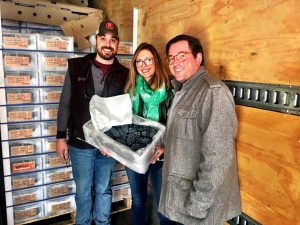
Yeast choice should be primarily based on alcohol and cold tolerance and secondarily on aroma production. Aeration during yeast rehydration is recommended for high risk fermentations (e.g. high sugar concentrations, potential nutrient imbalances and low temperatures). An enhanced estery character, suitable for wines that will be marketed earlier, will develop at fermentation temperatures of 22 – 24ºC. A less estery character, for full-bodied wines that will be marketed later, following wood maturation, is possible at temperatures of 24 – 28ºC. Fermentation at 28 – 32ºC is only recommended for full-bodied wines. Frequent mixing of skins and must by pump-overs or punch-downs is important. Skin cap temperatures exceeding 32ºC could potentially cause stuck or sluggish fermentations, or even bacterial spoilage.
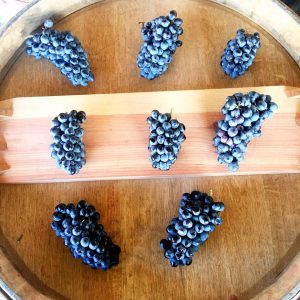
Frequent pump-overs or punch-downs during the early stages of fermentation will give less tannins as well as softer tannins. Concentrated aeration during the last phase of fermentation produces a softer tannin structure. Skin contact towards the end of fermentation or after fermentation depends on the required wine style, but pressing is usually done before completion of fermentation (2 to 8º Balling). Extended maceration is only recommended for wines made from healthy grapes harvested at optimum ripeness and that are destined for further maturation. Sensory evaluation on a daily basis is necessary.
By Grettchen van der Merwe
- To read more about the South African Wine Harvest click HERE.
- For more information about Grettchen and her winemaking click HERE.
- For more information about making Pinotage wine click HERE.
Questions? Or would like to make an order?
Call us at 877-812-1137 or email us at sales@juicegrape.com!
Annual Winemaker Awards Dinner Update

Our Annual Winemaker Awards Dinner tickets are on sale!
Get ready for a night of celebration, dancing, great food, raffles, and of course – wine tasting! We will have more details to follow with which items we will be raffling off. Also, we have a NEW feature to our Winemaker Awards Dinner this year. Every year our growers fly out and pour wine for you. But this year, if you would like, we want to invite you to pour your wines for guests and growers as well! We will have a few tables set up for you to pour your own wines during the tasting portion of the event. Please email cmusto@juicegrape.com and cmulryan@juicegrape.com to reserve your spot to pour your wines. They will set up a special table and materials just for you!
We hope to see you at this year’s dinner!
South African Harvest Update

While the Chilean grapes ripen and start to harvest, our South African grapes and juices are boarding boats. South Africa grows most of their wine grapes on the west coast. There is a cold current called the Benguela that flows up from the Antarctic cooling down the coastal regions; making it perfect for growing high quality wine grapes. Between the coastal cool breezes, altitudes, and fertile soils the vineyards thrive. Altitudes have a lot to do with the vineyard climate. The altitude differentiation creates micro climates throughout the Western Cape with different and interesting soil components. Stellenbosch (where we source some of our grapes) is South Africa’s hub for premier wine production. The climate is moderate and produces some of the world’s best Cabernet Sauvignon. The Breed River Valley is another region we source from that is a hot and dry climate with fertile soils. The Breede River Valley produces much of South Africa’s wine production, with many micro climates making up this viticulture area.
Cabernet Sauvignon is South Africa’s second most planted variety, right after Chenin Blanc, which is the most planted grape in South Africa. Cabernet Sauvignon from this region of the world is full bodied, notes of black fruit, and chewy tannins. Syrah from South Africa can be created in two different ways. Some winemakers create a full bodied, rich, high in alcohol, and ripe black fruit flavor. Other winemakers create a peppery Syrah that is more medium bodied. These winemaking styles depend on your maceration time and yeast you utilized. Pinotage, a cross between Pinot Noir and Cinsault, creates an interesting red wine. It can be made in a range of styles. Some winemakers make it in a Beaujolais style, others make it in more of a Burgundian style, and more and more winemakers are making it in a fruit forward style. You have lots of room to put your own creative spin on Pinotage!
This season we will have Cabernet Sauvignon, Syrah, Pinotage, and Barbera grapes available. In juice format we will have Shiraz, Merlot, Pinotage, and Cabernet Sauvignon.
There are many white wines from South Africa that are fun to make. Chenin Blanc is the white wine of South Africa and it creates a fresh, zesty, wine with notes of stone fruit. Sauvignon Blanc is another popular wine that is widely grown. South African Sauvignon Blanc is full of green citrus notes with crisp acidity.
This season we will have Sauvignon Blanc, Chardonnay, Semillon, Chenin Blanc, and Pinot Grigio juices from South Africa.
Arrival Estimates:
The Pinotage is harvesting in Mid-February, the Barbera, Syrah, and Cabernet Sauvignon will be harvested a few weeks later. The grapes and juices from South Africa should start arriving in mid-March.
Grapes Available from South Africa:
Pinotage, Cabernet Sauvignon, and Barbera
Juices Available from South Africa:
Shiraz, Merlot, Pinotage, Cabernet Sauvignon, Semillon, Chardonnay, Pinot Grigio, Chenin Blanc, and Sauvignon Blanc.
For more information on making wine from South Africa check out these blogs posts:
- Wine Spotlight: South African Pinotage
- Why I’m Making South African Syrah This Year..
- Winemaker Spotlight: Grettchen van der Merwe
- Spring Wine Yeast Suggestions
- Making Wine from Pinotage Grapes
For more information or if you would like to make a purchase please call us at 877-812-1137 or email sales@juicegrape.com
Chilean Harvest Update
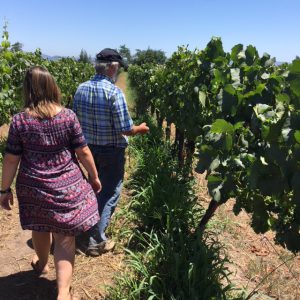
Viticulture:
Chile’s wine growing success is due to the cooling influences they receive from the Pacific Ocean, the Andes Mountains, and the warm and plentiful sunshine. Their warm Mediterranean climate allows for grapes to fully ripen and avoid fungal diseases. There is a current called the Humboldt Current that flows up from Antarctica, along the Chilean coast, and the cool air is pushed inland by the wind patterns. This cooling effect helps cool off the grapes during those sunny days. Colchagua and Curico Valley both benefit from this ocean influence; which allows these regions to produce grapes from fertile soil for wines that are gaining premium reputations.
Making Chilean Wine:
Cabernet Sauvignon is the most widely planted grape in Chile. Cabernets from this region of the world boast full bodied, ripe black fruit aromas and flavors, and some herbaceous characteristics. If you are a winemaker who does not enjoy herbaceous notes, we suggest using the CSM yeast on all of your Chilean reds. This yeast was specifically cultivated to help offset herbaceous notes. Merlots from Chile tend to be medium bodied, fruit forward, and depending on your winemaking style, can produce some very complex characteristics. Carmenere from Chile (known as the main grape of the country) showcase high levels of tannins, black fruits, and some herbaceous notes depending on the winemaking style. Another grape I would like to point out is Syrah from Chile. Syrah is widely planted across the region and displays notes of black fruit, and is full bodied, with great intensity. If you have tried Syrah from South Africa in the past it might be interesting to try Syrah from Chile and compare and contrast, or even blend them both together!
This season we will have Cabernet Sauvignon, Merlot, Carmenere, Malbec, Cabernet Franc, Petite Verdot and Pinot Noir grapes and juices from Chile.
White wines from Chile are also delicious. The most widely planted white grapes are Sauvignon Blanc and Chardonnay. We are lucky to receive Viognier and Pinot Grigio, as they are not as widely planted. Sauvignon Blanc from Chile has flavors of ripe apple, citrus and tropical flavors. While the Chardonnays have notes of ripe fruit and oak flavors. All white wines from Chile poses fresh, fruity, and crisp qualities that make it the perfect summer sipper.
This season we will have Sauvignon Blanc, Chardonnay, Muscat, Viognier, and Pinot Grigio grapes and juices from Chile.
Arrival Estimates:
The Chilean grapes and juices should start arriving in late April, early May. Once the grapes are harvested we will have more details.
Grapes Available from Chile:
Cabernet Sauvignon, Cabernet Franc, Carmenere, Malbec, Merlot, Petite Verdot, Pinot Noir, Syrah, Chardonnay, Pinot Grigio, Sauvignon Blanc, and Viognier.
Juices Available from Chile:
Cabernet Sauvignon, Cabernet Franc, Carmenere, Malbec, Merlot, Petite Verdot, Pinot Noir, Syrah, Chardonnay, Pinot Grigio, Sauvignon Blanc, Viognier, and Muscat.
For more information on making wine from Chile check out these blogs posts:
- Bud Break in Chile
- How to Make Chilean Malbec
- How to Make Chilean Carmenere
- How Much Wine Will A Case of Grapes from Chile or South Africa Make?
- Details from Our Trip to Chile
- Notes on Making Sauvignon Blanc from Chile
- Video About Curico Valley
- Winemaker Interview with Manuela Astaburuaga from Our Chilean Vineyards
- Our Wine Grapes of Chile Video
For more information on how to order please email sales@juicegrape.com or call 887-812-1137. Looking forward to working with you this Spring!
Sacrificial tannins 101
Have you heard about sacrificial tannins? If not, read on!
Why we love tannins
As wine drinkers, we love tannins because they help to give structure and mouth feel to a wine. Without it, wines would taste flabby and dull.
As wine makers, we love tannins because they aid in color stabilization, prevent and slow the process of oxidation, and give structure to the wine. Sacrificial tannins can help with this.
Tannins are already present in grapes through their seeds, skins, and stems. We add more tannin through oak aging as well as with oak or tannin alternatives. As fermentation begins, color compounds within the skins bind with proteins, which then drop out of the wine and settle onto the bottom. You can add tannins to white, rose, or red juice.
Tannins gets added as way to give these proteins within the juice extra tannins to bind on to, so that not everything is lost from the juice. This is the role of “sacrificial tannins,” or tannins that you as a a winemaker add in so that you don’t lose any from the grapes themselves.
How do I incorporate sacrificial tannins?
- Use oak chips or oak dust (preferably medium toast) at up to 3 oz per 5 gallons of wine
- FT Rouge for red wines. 5-25g/100 lb fruit. Add at first signs of alcoholic fermentation.
- FT Blanc for white or rose wines. 1-3g/100 lb fruit. Add after it’s been racked off of gross lees.
These can all be added directly to the juice at the onset of fermentation. Just sprinkle it into the juice and incorporate as much as possible, or add to red must right before the first punch down. It will settle to the bottom and can be racked off of at the end of fermentation.
Valentine’s Day Candy & Wine Pairings
Cupid is just around the corner, and we’ve got the perfect candy and wine pairings for you and your valentine to try this Valentine’s Day! (Or, for you to try the day after Valentine’s Day when all the candy is 50% off.)
Candy Hearts and Sauvignon Blanc – A light, crisp Wooden Valley California Sauvignon Blanc won’t over-power this lightly flavored, semi-sweet candy.
Chocolate Covered Marshmallows and Tawny Port – Tawny Port from Portugal is perfect with these heart shaped goodies, because a wine with too high of an acidity will curdle the chocolate which has milk in it and this port is low in acid.
Ferrero Rocher & Chardonnay – A bottle of Sonoma Cutrer Chardonnay would be the perfect pairing to this classic gifting chocolate. The hazelnut qualities of this Chardonnay will shine a spotlight on the nut, while the creamy quality of the wine will stand up to the chocolate.
Lindt White Chocolate Lindor Truffles and Rosé – A bottle of Empathy’s Rosé would go great with these creamy little balls of heaven. The creaminess of the white chocolate allows the wine’s fruity notes of watermelon and strawberries to pop.
Want to try this with your own Wine? Musto Wine Grape Company is here to help! We are New England’s largest supplier for home winemaking products and services. We can get you set up with all of your juice, grape and equipment needs and have you on track to making your own perfect pairing for next fall! Visit juicegrape.com or give us a call at (877) 812 – 1137 to learn more. We look forward to hearing from you!
How to Make Chilean Malbec Wine at Home
Making a New World Classic – Chilean Malbec
Chilean and Argentinian Malbec has become famous around the world for its consistently high quality and intense fruit flavors. Musto Wine Grape carries either fresh Chilean Malbec grapes or juice so that you can make wine at home. Chilean Malbec was the first wine that I made at the professional level, and it will always have a special place in my heart and at my dinner table. Here is my recipe for making a classic, fruity, Chilean Malbec at home.
- Crush Malbec grapes into a sanitized bin or tub. (Each 18lb crate will make 1.25 gals of finished wine).
- Apply 50ppm of Potassium Metabisulfite and stir well. Allow to sit for 8-12 hours.
- Apply .5ml of Color Pro Pectic enzyme per box diluted into a 10% solution with water to the must and stir. Allow to sit for another 8-12 hours.
- Mix Booster Rouge, FT Rouge, and Opti-Red, with spring water until it is the consistency of pancake batter and pour over top of crushed grapes. Mix in well.
- Add rehydrate CSM yeast (1g/gal) with Go Ferm rehydration nutrient and warm water. Allow to sit for 15 minutes and pour over top of crushed grapes.
- Punch down grapes 3 times per day throughout the duration of fermentation and monitor temperature and Brix levels daily. Use a hydrometer to test sugar content in a strained juice sample. Make sure the temperature does not exceed 85F.
- One day after adding the yeast, add Fermaid O, mixed with spring water in to the pancake batter style slurry. Dump into grapes during a punch down.
- After the depletion of 1/3 of the Brix (when the Brix level is between 16-11), add Fermaid O that is mixed with spring water into the pancake batter style slurry. Dump into to grapes at a punch down.
- Add Malo-lactic bacteria the same day as the Fermaid K. If you are using liquid cultures, just pour over the grape must and mix. If you use the dry cultures, rehydrate them in warm spring water according to their specific directions, utilizing any rehydration nutrients recommended.
- When the Brix have dropped below zero, press the wine into a sanitized tank, carboy, or demijohn. Make sure the vessel is topped up all the way to the top of the neck and sealed properly with a bung and airlock.
- Rack after 48 hours and then again in a week. Allow MLF to complete before adding sulfites.
- Allow the wine to age and rack it every 2 months and add sulfites when racking.
Recipe by the Winemakers at Musto Wine Grape









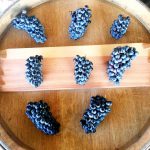

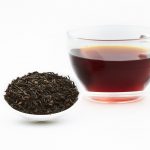


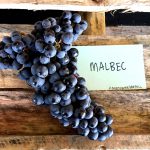
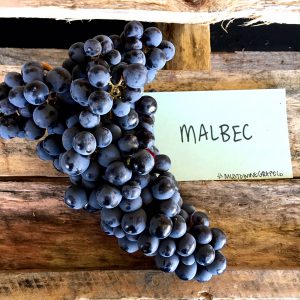

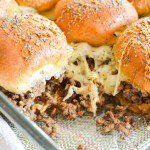
Recent Comments